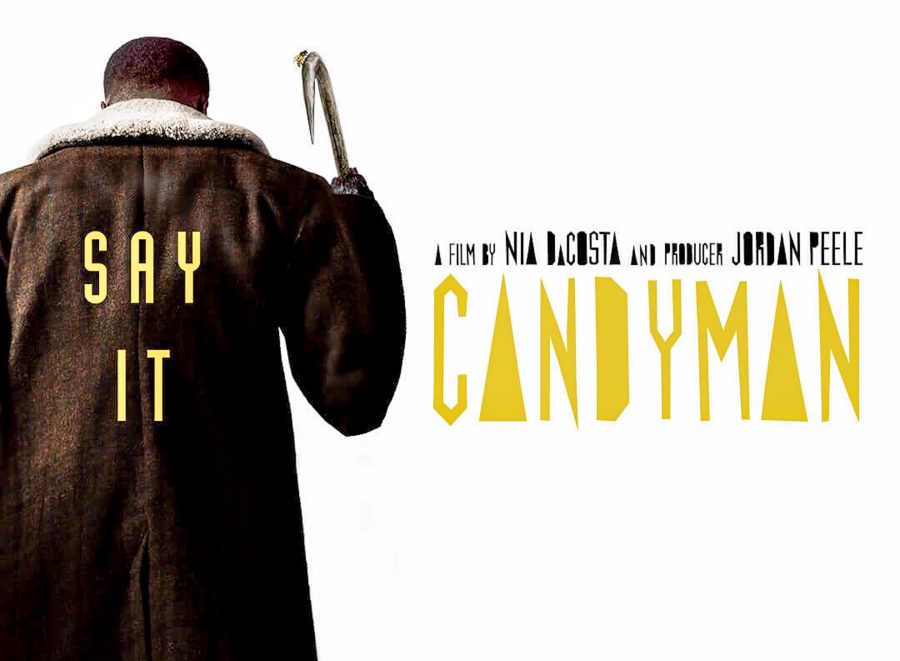Movie Review: ‘Candyman’ (2021) goes ‘beyond the conventions’ of horror to tackle America’s history of racial violence
Although there aren’t many impressive Halloween movies currently playing in theaters, you can watch plenty of other films from the comfort of your dorm room. (Photo courtesy of Universal Pictures)
September 24, 2021
From its title, its advertising, its familiar premise of a supernatural creature who preys on innocent people, “Candyman” (2021) appears to be just another generic horror film. However, that couldn’t be further from the truth.
While this movie does contain scary moments, unsettling ideas and graphic imagery, it uses these constructs to provide contemporary social commentary about the horrors of racial violence, something refreshing to see in a genre that so often places meaningless gore over thought-provoking ideas.
“Candyman” is a direct sequel to the 1992 classic of the same name, as well as the fourth movie in the “Candyman” film series.
In this movie, a Black artist named Anthony McCoy (Yahya Abdul-Mateen II) resurrects the titular Candyman, a hook-handed killer who has remained unsummoned for decades. When the monster begins killing off racially insensitive white people, McCoy must grapple with the complicated ethics of the Candyman, a creature who is itself a product of horrific white violence, and decide whether or not the Candyman must be eliminated.
Although I won’t spoil too many details regarding Candyman’s origin story or the film’s ending, it is worth noting that this film touches on very important questions regarding America’s legacy with racial violence towards Black communities. In more ways than one, the 2021 sequel updated many themes from the 1992 version. While the 1992 version focuses mainly on the injustices of urban housing, the 2021 version puts a greater emphasis on gentrification and police brutality.
Another aspect worth mentioning about “Candyman” is its visuals. The film’s bold stylistic choices immediately force the viewer to interact with it. For the first two minutes of the movie, everything is flipped so that all the letters and logos are backward. When I saw this, I almost left the auditorium to tell someone that the projector wasn’t working properly, until the film reverted back to its unflipped state. This moment augurs the many unique visual choices throughout the runtime that really make this film stand out.
Director Nia DaCosta should also be credited for her masterful use of reflections, low-angle shots and lighting. The cinematographic choices really enhance the film’s themes and subconsciously force the viewer to tackle its ideas from different perspectives.
At one moment, the film cleverly uses puppets to recap the events of the 1992 movie without actually depicting any violence. These moments serve as stark visual contrasts to moments where the film focuses on more colorful settings such as city landscapes and art exhibitions. I found myself unable to look away from a film that was so visually stunning to behold.
These elements culminate to create a very memorable experience that I would strongly recommend, even for those who do not particularly enjoy the horror genre. The intriguing concepts at play in this film make “Candyman” (2021) go beyond the conventions of the genre.


























































































































